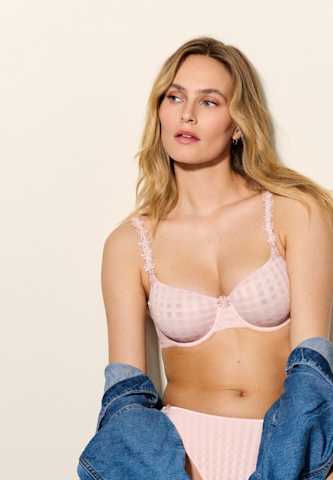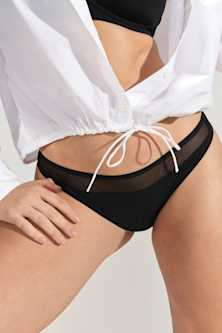
- Blog
- Fit advice
- Do you know your sister sizes?
Do you know your sister sizes?
That’s right, every bra size has two sister sizes. Do you know yours? And do you know why they’re so important? More importantly: Do you know how to determine your sister sizes? Sister sizes come in handy when your ideal bra size isn’t available or when a new style doesn’t fit as well as you're used to. Discover your sister sizes and find a bra that always fits like a dream.
Sister sizes – How bra sizes are determined
A good bra is comfortable, creates a beautiful silhouette, and makes you feel confident. The only condition: You have to wear the right size. Before we explain the importance of sister sizes, we want to explain how bra sizes are determined. Bra sizes consist of a:
number: the circumference of your rib cage measured just under the breasts
letter: your cup size
Cup size is simply the difference between your band size (measured just under the breasts) and your bust size (measured at the fullest part of your breasts). The letter says nothing about your volume. It should always be considered in relation to the band size. The cup size always changes as the band size gets bigger or smaller. This explains why someone with a 75D may have smaller breasts than someone with a 90C.
Sister sizes – How to find yours
Don't worry, you don’t need a calculator for this part. The rule is surprisingly simple, although it only applies to padded bras. If you go up a band size, go down a cup size. Let’s illustrate with two examples:
If you wear an 80C, your sister sizes are 75D and 85B.
If you wear a 95D, your sister sizes are 90E and 100C.
The main advantage: If your bra size isn't available, simply try one of your sister sizes. Keep in mind this trick only works with padded bras. It’s also important to use the same sizing system, as there's a difference between French, European, and American sizes.
Cup size is simply the difference between your band size (measured just under the breasts) and your bust size (measured at the fullest part of your breasts). The letter says nothing about your volume. It should always be considered in relation to the band size. The cup size always changes as the band size gets bigger or smaller. This explains why someone with a 75D may have smaller breasts than someone with a 90C.
Sister sizes: a useful alternative
Let's be honest: As handy as sister sizes are, nothing beats a bra in your perfect size. All women have one ideal bra size. If your new bra feels tighter or looser than usual, it's definitely worth trying your sister sizes.





